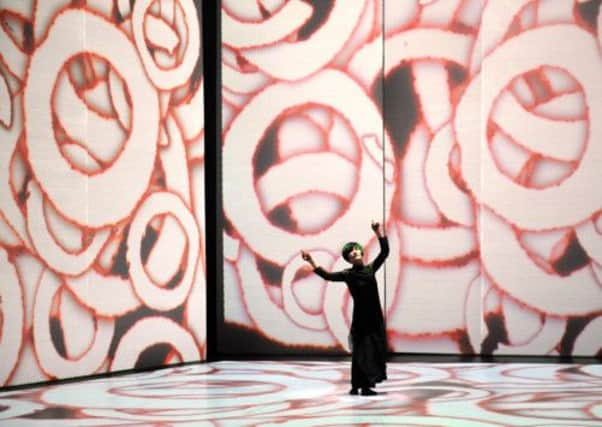Do filmic stage shows diminish live performance?


And as usual, the great and mischievous Byrne is unwilling to let the celebration pass without throwing a small spanner of controversy into the works.
“This is a great theatre,” he says. “And let’s see it being used for theatre, not for shows that are half film! I’m tired of coming into the theatre and watching people’s movies; at heart, theatre is about the words, and the actors speaking them.”
Advertisement
Hide AdThere was a slightly stunned silence from the distinguished audience, who had gathered for a gentle chat about the painting; yet as the new autumn season unfolds, I find myself thinking often of Byrne’s words, and of the growing role of elaborate film and video sequences in theatre, since new technology began to transform the designer’s art. Sometimes, the use of moving images in stage design clearly works as an enhancement of the show’s visual presence; last week, for example, I saw a new touring version of Mike Cullen’s The Collection, by Rapture Theatre, which uses the huge background image of a weeping woman’s face to powerful effect.
Then again, some artists create live performances that are clearly designed to accompany, or reflect on, important pieces of film; the recent National Theatre Of Scotland show A Little Bird Blown Off Course belonged to this strand of performance, adding a vivid element of live performance to the archive material gathered by the song collector Margaret Fay Shaw. And there are occasional shows – like last year’s Incredible Adventures Of See Thru Sam, by the young Glasgow company Random Accomplice – where moving images and animations are so brilliantly integrated with the live action that it’s difficult to imagine one without the other.
Yet there’s no doubt that the relationship between screen and stage can be problematic, where the screen images begin to take control of the action. The moving image is, by and large, both more authoritative and more familiar in our culture than live theatre, and audiences will tend, given the choice, to shift their attention from a live event which is unfinished and being created before their eyes, to the moving image which has the force of a completed art-work.
This year’s Edinburgh International Festival, with its fascinating theme of art and technology, contained at least two shows where film, animation or the moving image seemed to sideline or diminish the live performance element, in the exuberant but heavily filmic dance show Don Quichotte, and the controversial Chilean show Histoire D’Amour. And it’s striking how many shows by young theatre-makers, these days, make a bid for authority and glamour by projecting film-style credits as the show starts.
Yet it’s the very openness of the theatre format, and its lack of that authoritative finality, that gives it its special value in our culture; its ability to engage with audiences as citizens rather than consumers, to reach out, and to transform. Last week, the Citizens’ Theatre launched its magnificent new production of Crime And Punishment, set to travel on soon to its co-producing theatres in Liverpool and Edinburgh. There is not a shred of filmic imagery in the show; just a mighty text, an open stage, a great central performance, and director Dominic Hill’s inimitable grasp of what theatre is, its music, its living energy.
And somehow, this looks more modern, more timely, than any show which depends heavily on the technology of film. Not because film on stage cannot be great, and cannot be well used; but because modern audiences can see well-shaped moving images anywhere, at any time – whereas the great live performance is made new for each audience every night, and therefore, at its best, carries an edge of radical possibility and excitement that no recorded art form can ever quite match.